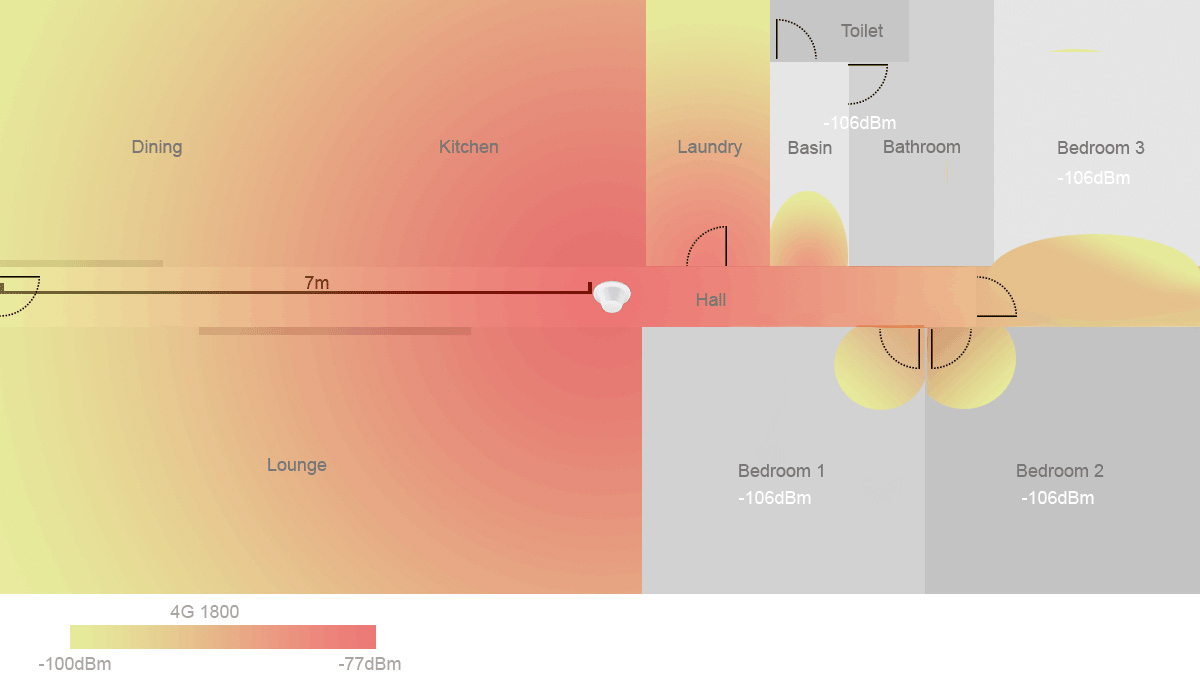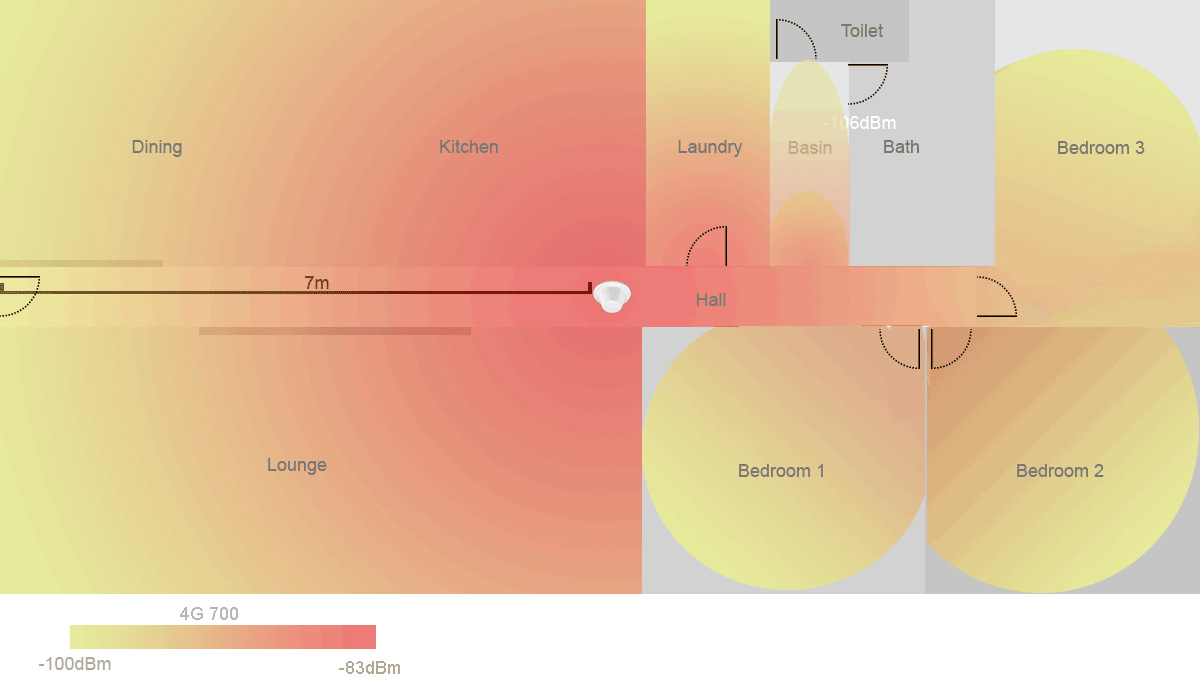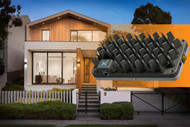Case Study: Enhancing Home and Small Building Connectivity with the ROAM R41
17 Feb, 2024
Yes, you can use the R41 for home and small building applications!
In our quest to improve cellular signal within smaller buildings, we recently put the ROAM R41 to the test in a real-world scenario. Our testing ground was the bottom floor of a residential house operating on the Telstra network, where indoor signal strength was mediocre at best, often necessitating Wi-Fi Calling for approximately half of the calls made.
The setup for our experiment included a Pulse Magnetic Antenna positioned on the roof to serve as the donor antenna and a Ceiling Dome Antenna installed indoors to act as the server antenna. Initially, we considered an LPDA antenna; however, without the ability to mount it sufficiently high on the roof, it failed to capture an adequate signal.
Test Results
LTE 1800 (Band 3)
- Input RSRP Signal: -92dBm
- Antenna Isolation: 100%
- Existing indoor signal without R41: -106dBm

LTE 700 (Band 28)
- Input RSRP Signal: -86dBm
- Antenna Isolation: 100%
- Existing indoor signal without R41: -105dBm

Conclusions
Our findings confirmed that the ROAM R41 is indeed effective for small building applications. Depending on the type of service antenna used, coverage can extend up to 7 meters with an omnidirectional dome antenna or up to 20 meters with a directional panel antenna. Notably, 80% of the enhanced signal was concentrated within the first 4 meters from the service antenna, diminishing beyond that range.
Performance in open areas was satisfactory; however, the signal struggled to penetrate plasterboard walls, instead flowing through open doorways. The lower 700 band yielded a marginally larger coverage area, making it our recommended frequency band for maximizing indoor signal reach.
For optimal results, it’s advisable to use the lower 700/850/900 bands wherever feasible. This setup should adequately cover the kitchen, dining area, hall, and living room in an average-sized open-plan house, with potential extension into additional rooms depending on the house’s layout and size. Visibility of the service antenna from within a 7-meter radius generally indicates good signal reception.
Recommended Products for Optimal Celluar Coverage
- ROAM R41: The core of our tested setup, proven to significantly enhance indoor signal strength.
- Powertec LPDA Antenna: Ideal for use as the donor antenna when paired with a 10 N Male to SMA Male cable for the best signal input.
- Blackhawk Ceiling Dome Antenna: Recommended for central placement in open areas of the house, or alternatively, the Blackhawk Wallmount Panel Antenna for elongated rooms.
- 240V Power Supply: Powers the ROAM R41, ensuring it operates at peak efficiency.
In addition to the individually recommended products for achieving optimal coverage with the ROAM R41, we have also compiled a convenient R41 Small Building LPDA Kit. This comprehensive kit includes all the essential components you need, allowing you to simply choose the server antenna that best fits your specific requirements. Whether you opt for the Blackhawk Ceiling Dome Antenna for central open areas or the Blackhawk Wallmount Panel Antenna for longer rooms, our kit ensures you have everything else ready to enhance your indoor signal strength effectively.
Our tests underscore the importance of a high-gain directional antenna for the donor to maximize the ROAM R41’s performance. By following our setup and recommendations, enhancing indoor cellular signal in small buildings is not just possible – it’s achievable with confidence.

